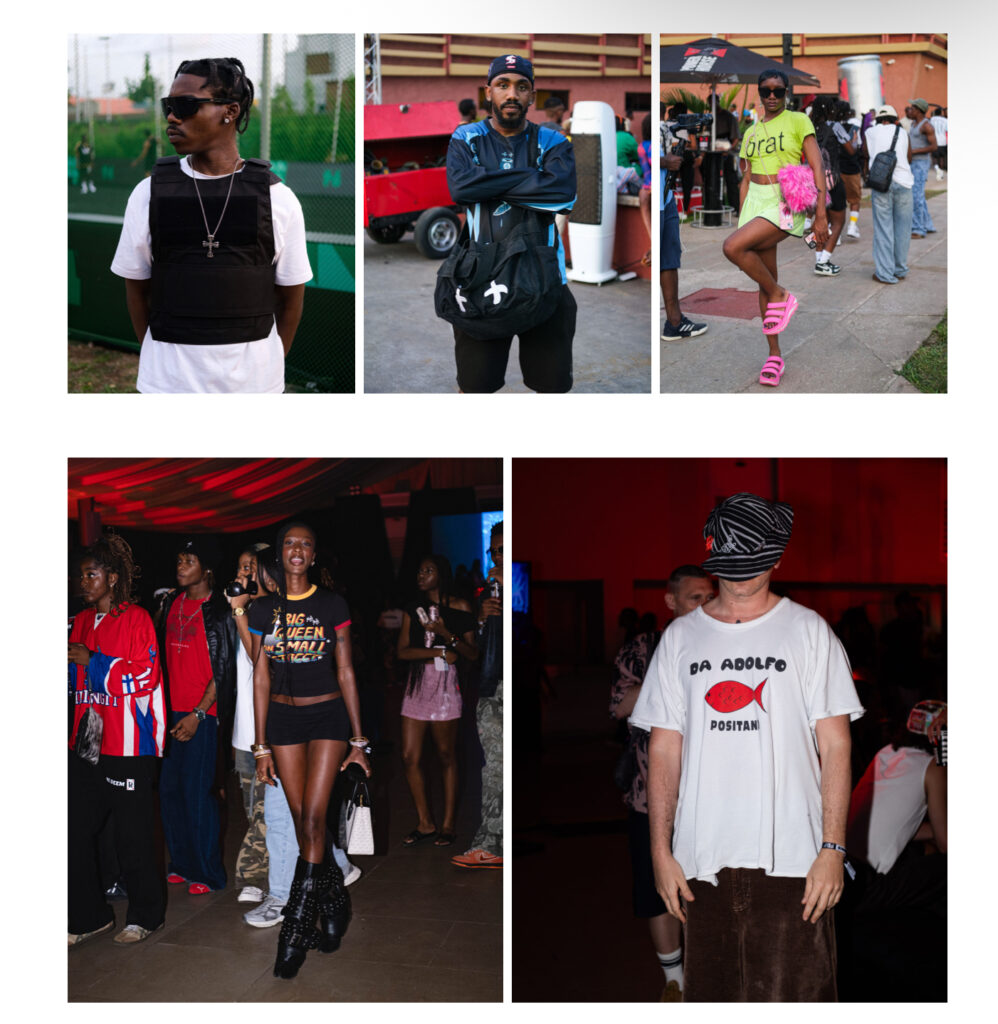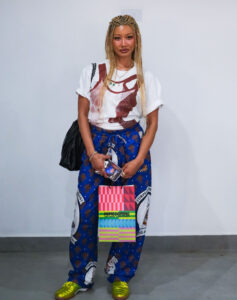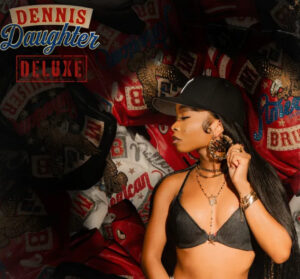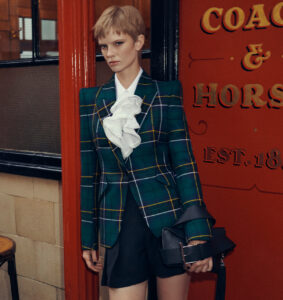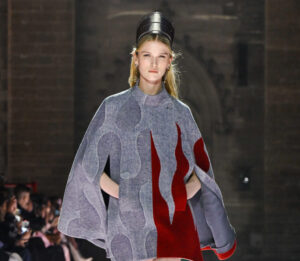As the sun set over the city of Lagos last weekend, something far more luminous rose in its place—HOMECOMING™ Festival 2025, the annual nexus where Nigerian culture isn’t just celebrated but projected globally with uncompromising vitality. Since its inception in 2018 by Grace Ladoja MBE, HOMECOMING™ has evolved into more than a festival. It’s a cultural accelerant, a ceremonial return, and a creative summit that unites diasporic identities, emerging visionaries, and global fashion heavyweights in a shared embrace of heritage, rebellion, and innovation.
This year’s edition was no exception. Set against a backdrop of pulsating Lagos streets, neon-painted walls, and the echo of Afrobeats reverberating through the Atlantic humidity, HOMECOMING™ 2025 didn’t just host events—it authored a manifesto for a new global creative order. With appearances from Marni’s Francesco Risso, AMBUSH’s Yoon Ahn, designer Mowalola Ogunlesi, visual artist Gabriel Moses, and Lagos-born provocateur Slawn—this was a cultural homecoming with the force of a revolution.
More Than a Festival – A Diasporic Doctrine
From the start, HOMECOMING™ has been defined by its ideological clarity. It’s not simply a celebration of African culture—it’s a reclamation of cultural authorship. Founded as a platform to bring global attention to the artistic energy of Nigeria and its diaspora, it provides space for collaboration between local creatives and global giants.
The result is a kind of cultural friction that sparks fire. London collides with Lagos. Milan intersects with Makoko. And the outcomes are potent: new designs, new alliances, new understandings. For one weekend, the Nigerian capital becomes the center of global creative gravity, not because of its infrastructure, but because of its imaginative muscle.
This year’s iteration saw workshops, talks, and performances that foregrounded African futurism, generational wealth through art, and redefinitions of luxury from non-Western perspectives. The underlying question was simple yet profound: Who gets to define culture?
Slawn x Nike – An Intervention in Design
One of the most talked-about moments of the festival came from Slawn, the renegade Lagosian painter and visual disruptor, whose visual language borrows from both Basquiat’s primal immediacy and Nollywood poster surrealism. For HOMECOMING™ 2025, Slawn unveiled a limited-edition Nike collaboration that was less about sneaker hype and more about interventionist storytelling.
His custom reinterpretation of Nike silhouettes came adorned with hand-painted motifs, Afro-naïve iconography, and satirical slogans, turning streetwear into sociopolitical canvas. The drop wasn’t launched through an app or boutique—it was unveiled in a street pop-up near Tafawa Balewa Square, where kids in hand-bleached denim swarmed like bees to honey.
This was streetwear in its purest form—urgent, accessible, hyperlocal, yet coded with global reach. Slawn didn’t just collaborate with Nike; he challenged the brand to speak in a new language, one steeped in Nigerian street intelligence.
Francesco Risso and Mowalola – A Dialogue on Disobedience
The highlight of the HOMECOMING™ talks series came in the form of an intimate dialogue between Marni’s Creative Director Francesco Risso and Mowalola Ogunlesi, the genre-blending, leather-loving iconoclast whose work continually reconfigures the meaning of African flow.
Risso, known for his emotionally layered collections and poetic surrealism, found common ground with Mowalola’s aesthetic chaos. Their discussion centered on disobedience as method—how refusal can become the highest form of cultural expression. They spoke of the need to destabilize Eurocentric fashion models, to allow color, silhouette, and texture to erupt from within instead of follow seasonal trends.
This wasn’t a designer Q&A—it was a public strategy session on the future of fashion, where Lagos becomes both a symbol and a testing ground. Risso later hinted that an upcoming Marni x Mowalola capsule could be in development, teased with a cryptic quote: “The next collection may not be clothes—it may be noise.”
AMBUSH and Gabriel Moses – Image, Identity, Immortality
Fashion’s entanglement with imagery was explored in a spellbinding installation curated by Yoon Ahn of AMBUSH and British-Nigerian photographer Gabriel Moses. In a makeshift gallery carved out of an abandoned colonial bank, they presented “DEIFIED,” a collaborative photo and sculpture series exploring how African identity is ritualized, distorted, and exported through media.
Moses’ portraiture—blending Yoruba spiritual cues with hyper-stylized futurism—was paired with Ahn’s jewelry and wearable sculptures, fashioned from cast bronze and recycled metal. Together, the works interrogated the liminal space between adornment and defense, memory and marketing.
Visitors could scan QR codes beside each image, activating augmented reality layers—where the subjects would animate, chant, or vanish. This was storytelling not through books, but through echoes, shadows, and code.
The Market – Streetwear as Archive
A cornerstone of the HOMECOMING™ experience remains its streetwear marketplace, a sprawling showcase where Lagos-based brands share space with rising African-American designers, U.K.-based collectives, and South African ateliers. But this isn’t just shopping—it’s archival engagement.
Labels like Wafflesncream, Vivendii, and Motherlan offered exclusive drops that blended DIY ethos with high-concept subversion. Each stall served not just as retail outpost but as a micro-gallery, complete with zines, bootlegs, and unreleased mixes playing behind racks of deconstructed jerseys.
In the festival’s Garage Takeover, patrons could bring old sneakers to be customized by a roving crew of Lagos graffiti artists, while in another section, young designers hosted impromptu fashion shows on shipping containers, critiquing fast fashion with garments made from repurposed Lagos bus upholstery.
The Sound – Sonic Diasporas and Rhythmic Return
Of course, no HOMECOMING™ is complete without its auditory dimension, and this year’s music programming was an explosion of diasporic soundwaves. The headliners—Afropop sensation Rema, Ghanaian-American rapper Amaarae, and London-based producer Julss—performed not as separate acts but as interwoven storytellers of migration, rhythm, and resistance.
Each night unfolded like a sonic fable. Rema’s set sampled field recordings from Benin mixed with 808s, while Amaarae drifted between high-pitched lullabies and bass-heavy trap, blurring gender and genre. Julss closed with a set that spanned Yoruba chants, dub techno, and 2-step garage—his MPC controller resembling a griot’s talking drum.
Most striking, however, was a late-night orchestral performance in collaboration with the Lagos Philharmonic, where traditional Nigerian instruments—talking drum, shekere, udu—merged with ambient electronica, scored by composer Layo Adesina. It was hypnotic. It was ancestral. It was now.
Flow
HOMECOMING™ Festival 2025 proves that the future of fashion, art, and music is not ahead of us—it’s rooted beneath us. By gathering global visionaries in the beating heart of Lagos, this cultural epicenter reminds the world that Africa is not a trend. It is the source.
What this festival continues to demonstrate is that the most impactful creativity is born not in isolation, but in communion. In the handshake between tradition and innovation. In the embrace between diaspora and homeland. In the collisions that birth continuity.
As Lagos waves goodbye to another year of HOMECOMING™, it leaves behind more than memories. It leaves behind blueprints, whispers, and a call: Return. Remember. Reimagine.
No comments yet.

